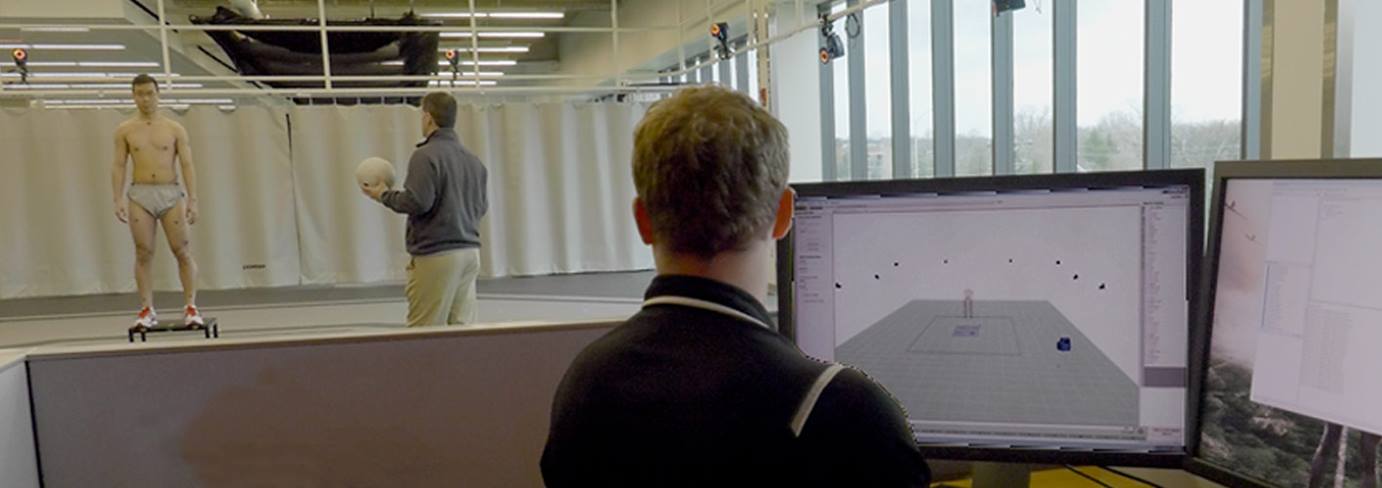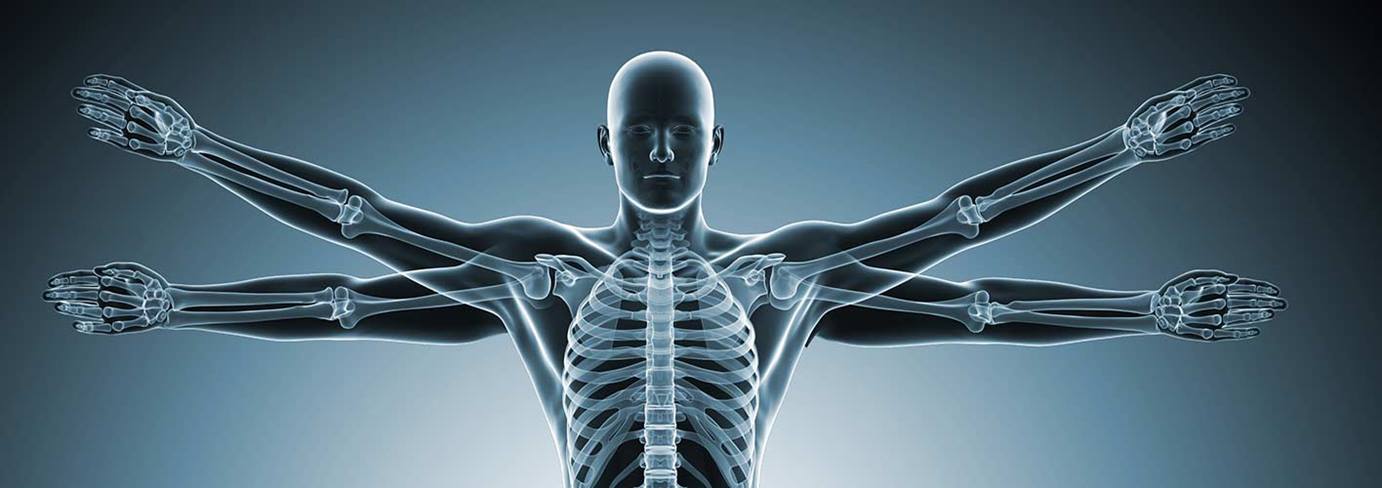Our Research
The collaborative work of our team, whether in our Motion Analysis and Performance Lab or in our physician or physical therapy clinic, is directed at improving personalized, evidence-based healthcare by uncovering the mechanisms behind athletic injuries, developing interventions to help prevent those injuries and creating innovative technologies and techniques to enhance treatment and rehabilitation.
Biomechanical Analysis

Benefiting athletes of all ages and skill levels
The Motion Analysis and Performance Lab conducts full-body motion analysis and neuromuscular control assessment. High-speed motion capture cameras record split-second movements, while hidden force plates embedded in the floor record the forces acting on each foot. We can record the activations of muscles during an activity with electromyography equipment, while isokinetic strength testing allows us to test muscle strength. Using these technologies, we can identify the wrist movements resulting in a service ace or service fail in tennis, torques acting on the knee that may lead to an ACL rupture, motor control deficits that may lead to back pain or strength imbalances that may lead to rotator cuff tears.
Sample Research Areas: Anterior cruciate ligament injuries, feedback instructional systems, jump-landing technique, periodic health and performance evaluations
Sports Performance Science

Developing more efficient movement patterns
Our Motion Analysis and Performance Lab is a collaborative effort between engineers, athletic trainers, physical therapists, physicians and coaches to measure how athletes move. We are able to simulate real-life sports environments such as a pitcher’s mound, a golfing tee box, a batting cage or a running track to study the motion of the athlete’s body.
Utilizing this in vivo data with simulation software, we study how people are loading their joints and straining their ligaments. By understanding these motions and loads, we can identify athletes who have a greater likelihood of injury or disease and develop training and treatments that are effective at correcting those motions and loads. We are using this same technology to learn why some athletes can perform better than others and then train our athletes to perform at their highest level.
Many Buckeyes fans are most interested in the work we do with the Ohio State football team. This includes screening all incoming players and testing their strength, function, kinematics, kinetics and bone density to reveal the areas that might develop into an injury and then developing injury-prevention strategies to keep them healthy.
Sample Research Areas: Injury prevention programs on healthy and ACL-injured athletes; the influence of knee bracing on the mechanics of athletes; core strength impact on running injuries
Rehabilitation

Getting athletes back to their sport safely
Rehabilitation methods based on biofeedback can be extremely effective in helping patients get back to activity. In the Motion Analysis and Performance Lab, we investigate individual adaptation to injuries during the rehabilitation process. We examine training interventions on a wide variety of musculoskeletal issues, evaluating orthopedic implants, surgical techniques and sports capabilities. The biomechanical and neuromuscular analysis allow for identification of neuromuscular impairments following injury. Clinical research programs focus on the development and application of novel rehabilitation protocols to enhance recovery and prevent re-injury.
Sample Research Areas: The effect of neuromuscular electrical stimulation on the quadriceps before and after ACL reconstruction; rehabilitation and outcomes following anterior cruciate ligament (ACL) injuries; development of knee osteoarthritis following knee injury; development of evidence-based physical therapy rehabilitation guidelines
Clinical Trials and Cohort Studies
Improving health and quality of life
Much sports medicine research takes place outside of the traditional lab. Our faculty are involved in numerous prospective cohort studies, multi-center studies, clinical trials, grants, national and international presentations and ongoing publications.
Ohio State Sports Medicine is a national leader in evaluating new treatments to learn whether they are more beneficial than the current standard of care. Further, we led the establishment of several multi-center, multi-year studies that gather data before, during and after an injury to determine what factors may help or hinder the success of the procedure.
Sample Research Areas: Neocart® cartilage restoration, multi-center ACL stud


